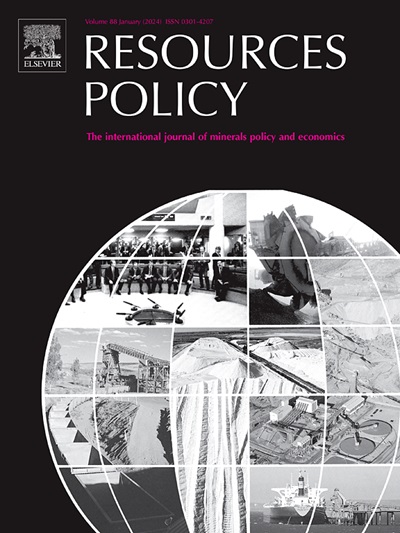Using metals to hedge carbon emission allowances – Tail-risk and Omega ratio analysis
IF 10.2
2区 经济学
0 ENVIRONMENTAL STUDIES
引用次数: 0
Abstract
In recent years, carbon allowances have experienced significant volatility as a mechanism for reducing CO2 emissions. This study constructs two five-asset portfolios that include carbon emission allowances and various metals, to evaluate which portfolio offers lower exposure to extreme risk and a more favourable return-to-risk profile. Extreme risk is assessed using several parametric VaR models, such as the traditional normal VaR, two non-normal models (logistic and hyper-secant), and the CVaR model. The Omega ratio is utilized to gauge performance in terms of return-to-risk. The portfolios are constructed for both pre-crisis and crisis periods. The similarities in the structure of the constructed VaR portfolios suggest that different objective functions have a limited impact on portfolio design. However, the selection of the VaR model does affect the estimated downside risk, which is crucial for the accuracy of the model and effective extreme risk assessment. Both portfolios function as effective hedges for carbon allowances, achieving a reduction in extreme risk of over 60% during both periods. Nevertheless, the precious metals portfolio, dominated by gold, outperforms the industrial metals portfolio. Analysis of the Omega ratio shows that the precious metals portfolio consistently provides better risk-adjusted returns at all threshold levels, indicating that investors can enhance their returns by combining carbon allowances with precious metals. This outperformance is largely attributed to the significantly lower risk of gold compared to other metal commodities. The results may provide essential guidance for investors and decision-makers alike.
求助全文
约1分钟内获得全文
求助全文
来源期刊

Resources Policy
ENVIRONMENTAL STUDIES-
CiteScore
13.40
自引率
23.50%
发文量
602
审稿时长
69 days
期刊介绍:
Resources Policy is an international journal focused on the economics and policy aspects of mineral and fossil fuel extraction, production, and utilization. It targets individuals in academia, government, and industry. The journal seeks original research submissions analyzing public policy, economics, social science, geography, and finance in the fields of mining, non-fuel minerals, energy minerals, fossil fuels, and metals. Mineral economics topics covered include mineral market analysis, price analysis, project evaluation, mining and sustainable development, mineral resource rents, resource curse, mineral wealth and corruption, mineral taxation and regulation, strategic minerals and their supply, and the impact of mineral development on local communities and indigenous populations. The journal specifically excludes papers with agriculture, forestry, or fisheries as their primary focus.
 求助内容:
求助内容: 应助结果提醒方式:
应助结果提醒方式:


